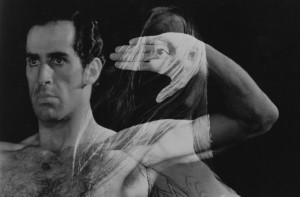I just happened to be reading Eliza Minden’s blog post from earlier this year: Desert Island Dances and she so eloquently writes about one of my all-time favorite contemporary ballets: “The Green Table”.
I had the incredible good fortune, when I was a kid growing up in the sixties, to see The Joffrey Ballet perform this ballet, when the touring company came through my hometown. Wow — I was captivated. And, the cast included the incomparable Maximiliano Zomosa as Death – a role he became famous for. I was enthralled – of all the ballets I saw Joffrey perform, this one sticks in my mind the most. And, I thought, how appropriate in this time of yet more peace negotiations (this time with Iran) — how appropriate to write about it – and the statement the ballet makes – that war is, well, ultimately pointless.
Here are more viewpoints about the ballet – gathered from around the web – with history of how it was created:
From Eliza Minden, The Barre Flies:
“My own picks: Kurt Jooss’s The Green Table. The ultimate anti-war ballet, as relevant and necessary today as it was at its premiere in 1932. A stark stage; scary, grotesque costumes; simple, legible steps relentlessly repeated to frightening effect; an unforgettable characterization of Death — The Green Table hits with such force it almost knocks the wind out of you. During the Vietnam War it inspired a New York audience to follow the dancers out of the theater and into the street to protest. How many dances can do that? If I’m stuck on a desert island it might be consoling to know I’m far from the horrors of war and human folly.”
And from numeridanse.tv:
“The Green Table was created in 1932 for the “Concours international de chorégraphie” in Paris, in which Jooss had been invited to participate. The originality of the piece won him the first prize and marked an important step in his career.
Choreographed in 1932, between two great conflicts, The Green Table is a sort of generic war, a set of circumstances that produce the same result no matter where or when they are played out. So Death bears the combined iconographic attributes.
In 1932, looking out through the thickening hedges of Nazism, Jooss takes a less visionary path. The Green Table is concerned neither with the individual’s struggles and redemption, nor with working out a nobler fate for mankind. Jooss dramatizes the way destructive impulses are released, and shows us the consequences. His moral position is unimpeachable, and he drives home his lesson in a series of stark images. Each scene works a variation on the same theme, like the 41 woodcuts in Hans Holbein’s The Dance of Death (5). The idea is that Death becomes everyone’s partner, effectively seducing them into his dance on the same terms by which they lived their lives. No decisive action, change, or resolution is suggested, and in framing the Dance of Death with the stalemated parentheses of a diplomatic conference, Jooss seems to say none can be expected. The expressionists found the Dance of Death.
Through archetypal characters Jooss revisualizes human life as a function of a larger cosmology, an enduring and spiritual sphere where perhaps even war and death can be seen in a more comprehensible scale. Undiluted essences of natural behavior, these characters are stripped of temporality and individual preference. Today, even as we feel detached from their obvious artificiality, we recognize ourselves in them, in some epic form. People will still be able to understand them in a hundred years.”
The Green Table: The Introduction through The Farewells
